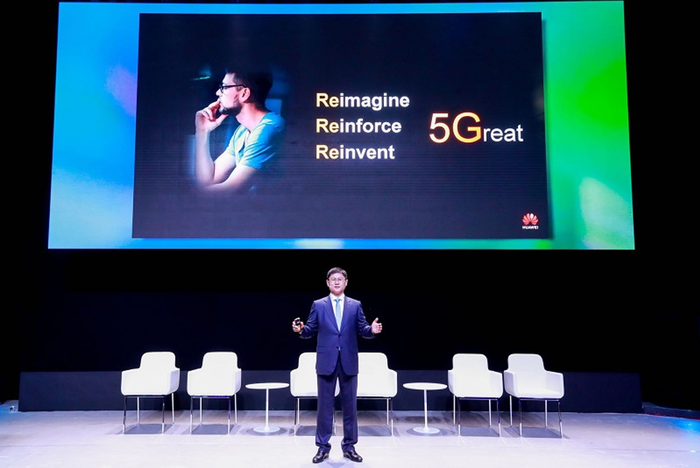Huawei Urges Industry Collaboration to Boost 5G ProsperityHuawei Urges Industry Collaboration to Boost 5G Prosperity
March 2, 2023

Sponsored Content
5G has achieved in three years what took 4G another two to accomplish, but providers still have much ground to cover in extending coverage and providing high-quality services, according to Li Peng, president of Huawei Carrier BG. Speaking at MWC Barcelona 2023, Li urged industry players to work together to accelerate prosperity in the 5G market.

Providers have an opportunity to turn 5G from “good” to “great” through innovation, high-quality user experiences and the expansion of 5G networks, Li said. “To turn 5G from good to great, the industry needs to reimagine 5G business, reinforce 5G coverage, and reinvent 5G technologies.”
5G, he noted, has made great strides in its three years of commercial availability, with penetration into 17 million homes. At the end of 2022, more than 1 billion 5G subscribers had enjoyed high-definition streams of major international sports events. “It has taken 5G only three years to achieve the progress 4G made in five years. From this perspective, 5G has already achieved success,” Li said.
No Time to Rest
But this is not time for the industry to rest on its laurels. Li noted much more work is needed for 5G to reach its full potential.
A recent GlobalData study on 5G success indicates that providers need to invest more in monetization and B2C innovation. While providers have performed well in extending access to fast broadband, as a whole they have fallen short in delivering innovations to consumers, the study says.
At the annual event in Barcelona, taking place Feb. 27 to March 2, Li spoke of the opportunity to monetize speed, traffic and privilege. The latter is achievable in a number of ways, including high-quality 5G NR (New Radio) offerings, home WiFi management, and QoS guarantee for video and gaming. By monetizing these services, providers have the potential to substantially increase ARPU (average revenue per user).
In terms of 5G expansion potential, 200 million legacy XDSL broadband lines are in need of upgrade around the world. Meanwhile, more than 60 million small and midsize organizations, including an excess of 12,000 construction sites and more than 200,000 amateur sports clouds in Europe want leased 5G line services, Li said. One European carrier had already achieved a Net
Promoter Score (NPS) of above 90 and increased its ARPU by over 60% by providing 5G FWA (fixed wireless access), he added.
User Experiences
To satisfy the desire for next-generation experiences, providers can leverage 5G capabilities to deliver videos offering higher definition and multiple viewpoints.
Seventy percent of users, he noted, are willing to pay more for upgraded 5G experiences. Carriers can expand application and content delivery by adopting the network-as-a-service (NAAS) model, Li said.
As carriers deepen 5G coverage, they boost monetization opportunities, Li said. The world’s top 20 carriers in 5G network expansion last year enjoyed significantly higher ARPU and overall revenue growth compared to the global average, he said.
Carriers should think more about extending coverage from outdoors to indoors and from cities to suburban and rural areas. This will require increasing the coverage of 5G base stations and 5G signals that penetrate more walls and buildings, which will enable delivering better experiences to more users.
Reinventing 5G Technologies
Li called for a reinvention of 5G technologies to achieve new breakthroughs in network capacity and coverage. 5G base station equipment innovations, he said, can help provide deeper coverage.
To that end, Huawei in 2022 launched MetaAAU, a third-generation AAU (active antenna processing unit) for 5G base stations, which he said offers about 30% higher capacity and coverage. Huawei followed that launch this year with the introduction of its BladeAAU, which enables simple deployment of 2G, 3G, 4G, and 5G networks on a single pole.
Looking ahead to 2030, Li spoke of a shift from 5G to 5.5G, which he said will increase the standard’s capacities tenfold. It will also open 100 times more opportunities for carriers to deliver services in areas such as free-viewpoint video, enterprise cloudification, mobile private networks, and passive IoT. While similar to 5G, 5.5G is faster, more automated, more intelligent, and supports a wider range of frequencies.
About the Author
You May Also Like










.png?width=300&auto=webp&quality=80&disable=upscale)


_1.jpg?width=300&auto=webp&quality=80&disable=upscale)